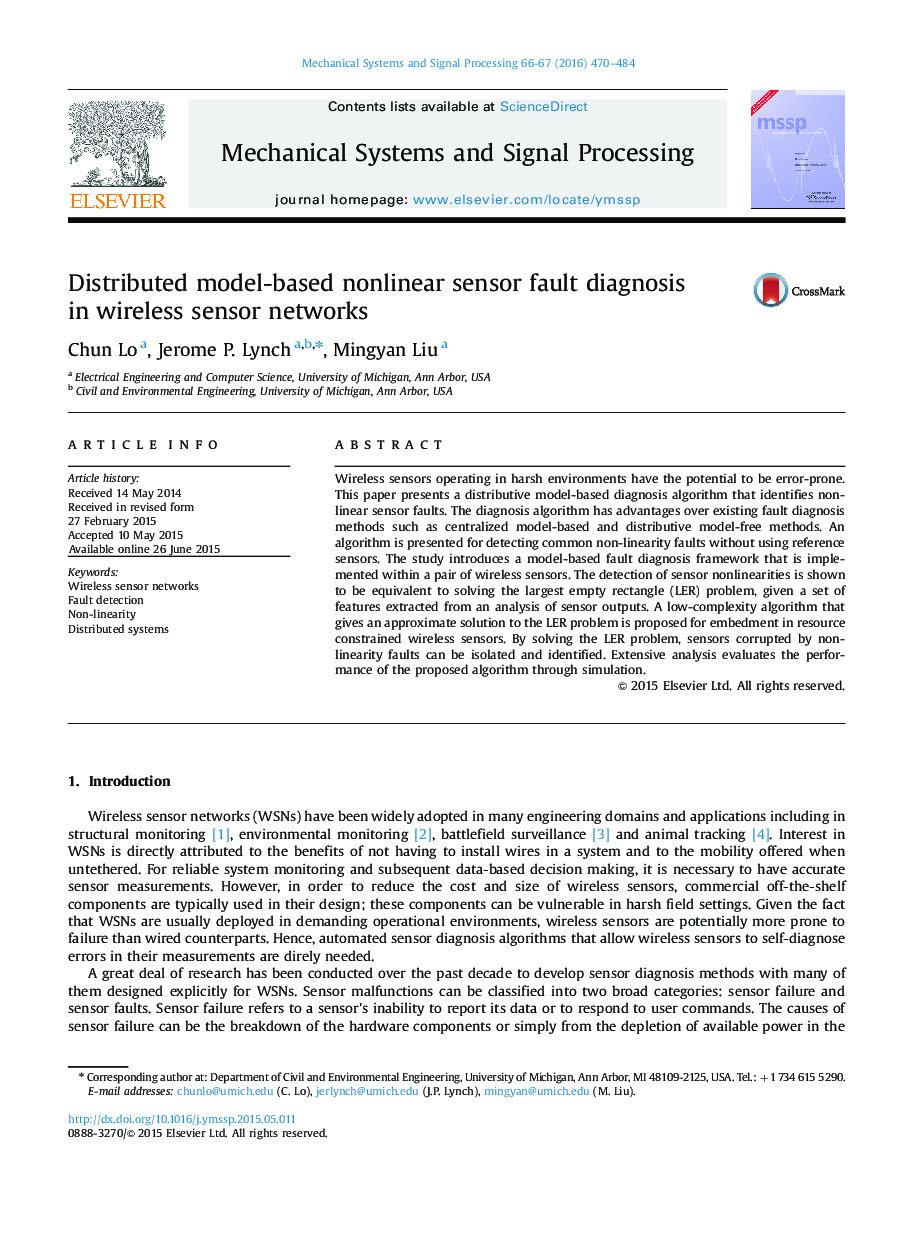| کد مقاله | کد نشریه | سال انتشار | مقاله انگلیسی | نسخه تمام متن |
|---|---|---|---|---|
| 559143 | 1451861 | 2016 | 15 صفحه PDF | دانلود رایگان |
کلید واژه ها
1.مقدمه
2. مشاهدات سنسور و مدلهای خطای غیر خطی
3. کشف خطای غیر خطی و متودولوژِ تعیین
3-1 تابع خطای cross
3-2 محاسبه ی نقطه ی ویژگی
3-3 مسئله ی بزرگترین مربع خالی (LER)
الگوریتم 1. تقریب الگوریتم بزرگترین مربع خالی.
4. شبیه سازی و نتایج
4-1 سیستمی برای تایید
4-2 متودولوژی شبیه سازی
4-3 نتایج شبیه سازی
5. نتیجه گیری
• Introduced a distributed sensor fault detection framework for non-linearity faults.
• Illustrated nonlinear sensor fault detection is equivalent to the LER problem.
• Presented a low complexity algorithm suitable for embedding in wireless sensors.
• Evaluated the performance of the algorithm extensively through simulations.
Wireless sensors operating in harsh environments have the potential to be error-prone. This paper presents a distributive model-based diagnosis algorithm that identifies nonlinear sensor faults. The diagnosis algorithm has advantages over existing fault diagnosis methods such as centralized model-based and distributive model-free methods. An algorithm is presented for detecting common non-linearity faults without using reference sensors. The study introduces a model-based fault diagnosis framework that is implemented within a pair of wireless sensors. The detection of sensor nonlinearities is shown to be equivalent to solving the largest empty rectangle (LER) problem, given a set of features extracted from an analysis of sensor outputs. A low-complexity algorithm that gives an approximate solution to the LER problem is proposed for embedment in resource constrained wireless sensors. By solving the LER problem, sensors corrupted by non-linearity faults can be isolated and identified. Extensive analysis evaluates the performance of the proposed algorithm through simulation.
Journal: Mechanical Systems and Signal Processing - Volumes 66–67, January 2016, Pages 470–484
